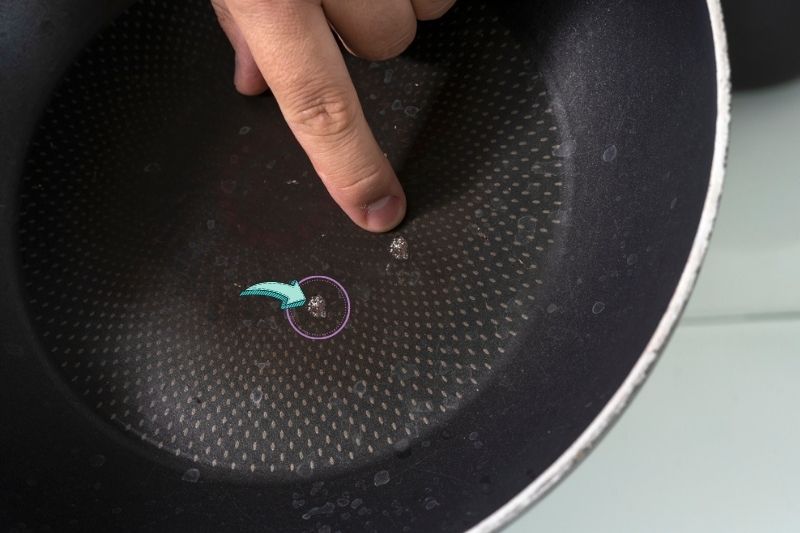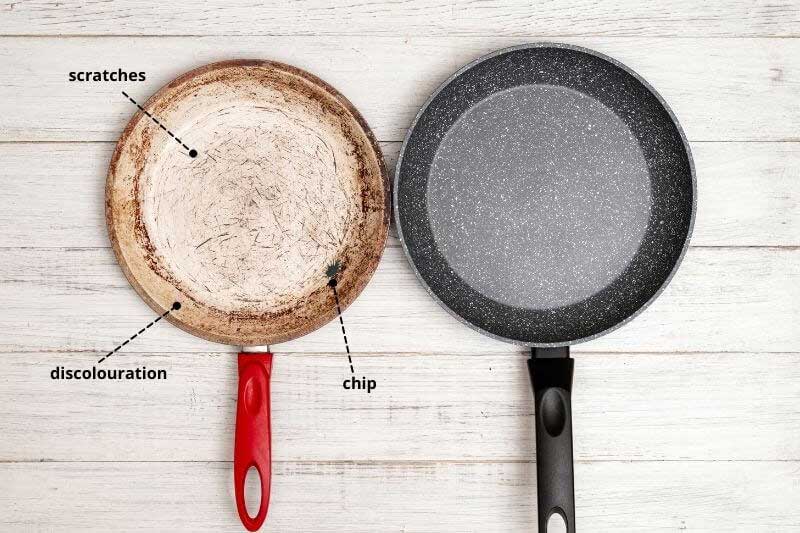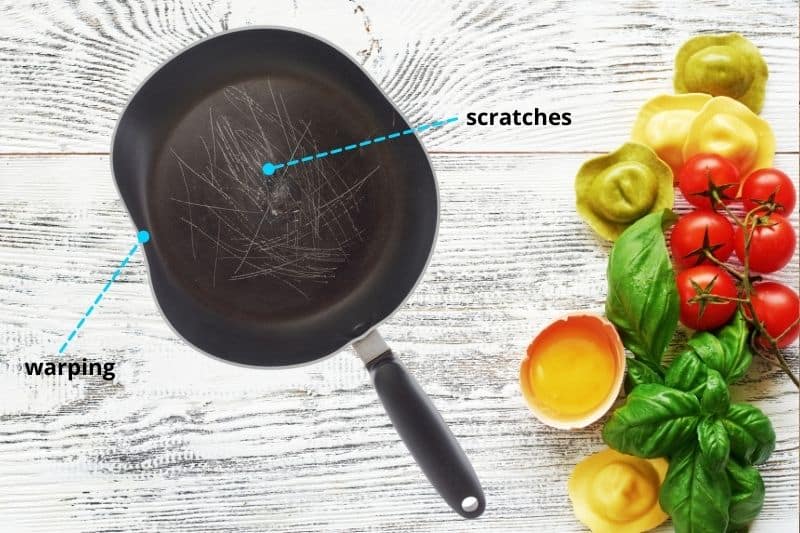Knowing when your non-stick pans need to be replaced can be tricky. However, there are a few indications on the surface of the pans that can let you know if the non-stick coating is no longer in good health.
Today, we’re looking at the key signs that will let you know if your non-stick pans are ruined and when it is best to buy new pans.
As you probably know, non-stick pans don’t last forever. Even if you only use plastic or wooden utensils, at some point, a non-stick pan will need to be replaced.
Granted, only using this type of utensil can keep your pan in great condition for far longer, but it’ll still need to be replaced at some point.
Signs It’s Time to Throw Away Your Non-Stick Pan
1. Warping
If your non-stick pan has warped, it is a good idea to replace it. Warping will affect the cooking surface, and you’ll likely start to experience cold spots on the bottom of the pan.
However, more troublingly, this warping can affect the non-stick coating as well. The warp can cause the coating to peel, and if that happens, the coating can get in your food, and the pan won’t be non-stick anymore.
2. Discolouration
We aren’t saying that your five-year-old pan needs to look brand new here. However, dramatic discolouration (it has turned brown, for example) can be a sign of the non-stick coating starting to fail.
If you notice areas of discolouration in your pan, replace it. When non-stick coatings start to fail, there isn’t anything you can do to save them.
3. Scratches
Scratches are really common in non-stick pans. Even though all of us tell everyone at home not to use metal utensils in the pan, it happens. It can also happen in the dishwasher or when hand washing, if a piece of burnt-on food gets into the sponge, for example.
Heavy scratches in the non-stick coating will lead to the coating peeling. This will cause rust and mean the coating isn’t as effective as it used to be.
4. Chips

Chips in a non-stick coating often occur when something is accidentally dropped into the pan. They can also occur if the pan is dropped, of course.
Chips out of the coating can lead to peeling, but they also lead to rust. Using a rusty pan isn’t a good idea, and it certainly isn’t if the coating is peeling as well. So, make sure your pan is chip-free.
If your non-stick pan has any of the signs above, it is time to take a look at our favourite non-stick pans. We have loads of non-stick pan articles on here that will help you choose your new favourite pan. You could also look at stainless steel or cast-iron options too.
As a general rule, non-stick pans should be replaced every five years. However, stainless or cast iron can last much longer than this. Cast iron, for example, can last the rest of your life with the proper care.
Why Don’t Non-Stick Pans Last Very Long?
There are several reasons why your non-stick pan will lose its non-stick powers over time. The biggest culprit is often the use of metal utensils during cooking. Sharp instruments such as metal whisks or spatulas will gradually chip away the non-stick coating.
The same goes for appliances, such as electric mixers, which can scratch or damage the non-stick finish on your pans. It is recommended to use these instruments in bowls prior to putting the food into your pan.
In addition, most non-stick cookware is not dishwasher safe, so if this is forgotten or ignored, you will eventually kiss goodbye to the non-stick coating.

How to Preserve the Longevity of your Non-Stick Pan
The general commandments of the non-stick world are as follows:
- Use wooden/rubber/plastic utensils. Avoid metal.
- Don’t put your non-stick pan in the dishwasher unless the packaging states otherwise.
- Wash and “season” your pan before using.
- Avoid overheating your pan.
- Avoid non-stick cooking sprays (this will encourage overheating).

Scott is a writer and a passionate home chef. His passion for cooking began when he was 10 years old. Scott has been writing professionally for over five years now and loves to combine his passion for cooking with his day job.


